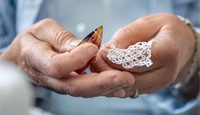
A first Register of elements of the ICH of Cyprus was created by experts at the Cyprus Research Centre on the basis of the Centre’s Oral Tradition Archive. The register was published in 2012 with the title: Από την άυλη πολιτιστική κληρονομιά της Κύπρου – Elements of the Intangible Cultural Heritage of Cyprus.
Further to this Register, the Cyprus National Commission for UNESCO, under the Ministry of Education and Culture, has launched an open call for proposals to communities and NGOs in 2015, in order to establish a National Inventory of Intangible Cultural Heritage of Cyprus. The nomination files submitted by communities concerned for each element are processed by an expert Committee, in close collaboration with communities, groups of bearers, individuals concerned, research institutes and other stakeholders concerned. Inscription of elements on the National Inventory is based on the following principles:
1. The element constitutes intangible cultural heritage as defined in Article 2 of the Convention:
1.1 Belongs to one or more of the following domains:
(a) oral traditions and expressions; (b) performing arts; (c) social practices, rituals and festive events; (d) knowledge and practices concerning nature and the universe; (e) traditional craftsmanship
1.2 The element is transmitted from generation to generation and is constantly recreated by communities and groups in response to their environment, their interaction with nature and their history, and provides them with a sense of identity and continuity, thus promoting respect for cultural diversity and human creativity.
1.3 The element is compatible with existing international human rights instruments, as well as with the requirements of mutual respect among communities, groups and individuals, and of sustainable development.
2. Inscription of the element will contribute to ensuring visibility and awareness of the significance of the intangible cultural heritage and to encouraging dialogue, thus reflecting cultural diversity worldwide and testifying to human creativity.
3. Safeguarding measures are elaborated that may protect and promote the element.
4. The nomination files were prepared with the widest possible participation of communities (local authorities, practitioners, cultural organisations, other NGOs), with their free, prior and informed consent.
The National Inventory of Intangible Cultural Heritage is updated every year, with the addition of new elements and updating of the existing entries.